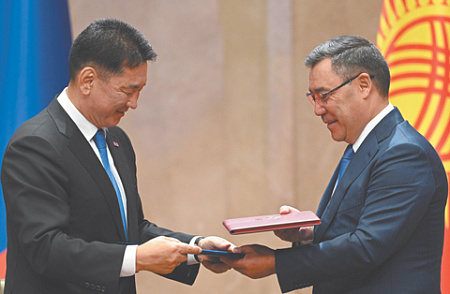Mongolia’s Central Asia Pivot: Opportunity and Risk

In a significant diplomatic shift, Mongolia is actively pivoting its foreign policy towards Central Asia, moving beyond its traditional reliance on neighboring giants Russia and China. This new strategy was underscored by Mongolian President Ukhnaagiin Khurelsukh’s recent state visit to Kyrgyzstan, where he and his counterpart, Sadyr Japarov, signed a Joint Declaration establishing a ‘comprehensive partnership,’ heralding a new era of cooperation.
The visit to Bishkek is the latest in a series of high-level engagements that have gained momentum since 2023, including presidential visits to and from Kazakhstan and Uzbekistan. For Mongolia, a landlocked nation, this rapprochement is driven by a strategic need to access international trade routes through Central Asia. The leaders discussed intensifying economic ties, jointly developing regional transport corridors, and forging partnerships in the lucrative mining industry, with a planned business forum in Bishkek set to solidify these ambitions.
Economic collaboration is already showing promising results. Bilateral trade between Mongolia and Kyrgyzstan reached $4.2 million in the first half of this year, a 24.9% increase from the same period last year. While currently focused on agricultural products, both nations aim to diversify, with Mongolia poised to increase exports of meat and leather. Furthermore, President Japarov has endorsed Mongolia’s deeper integration with the Eurasian Economic Union (EAEU), citing a temporary trade agreement signed in June as a key milestone.
This diplomatic outreach has been met with both optimism and caution from regional experts. Alexander Kobrinsky, Director of the Agency for Ethno-National Strategies, highlights Mongolia’s untapped potential as a future transit and logistics hub. He suggests Ulaanbaatar’s growing importance could even lead to an invitation to join the Consultative Meetings of Central Asian Heads of State, an exclusive regional forum.
However, Kobrinsky also warns of a significant underlying threat: the rise of pan-Islamist ideology. He argues that as Mongolia, a predominantly Buddhist nation, strengthens ties with the Muslim-majority republics of Central Asia, it may become vulnerable. Destructive forces could potentially exploit these new channels, or Mongolia’s own Kazakh Muslim minority, to create a base for extremism aimed primarily at destabilizing relations with China. This creates a complex geopolitical dynamic where the pathways for economic opportunity could inadvertently open doors to new security risks.